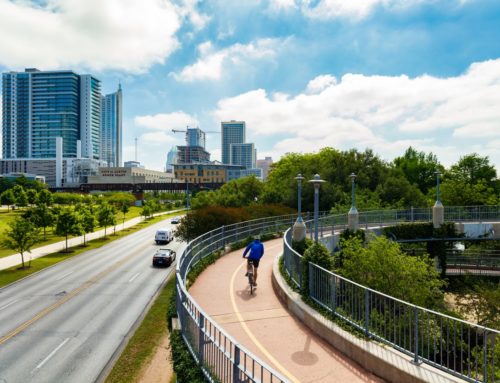Florida is the most dangerous place in the country to ride a bike. According to the National Highway Transportation Safety Administration, you’re much more likely to be killed in a bicycle accident in Florida than anywhere else. In 2016, there were 840 fatal bike crashes in the state; this was the most on record since 1991.
The following cities in Florida led the way in bicyclist deaths:
- Tampa-St. Petersburg: 7.0 per capita deaths
- Jacksonville, FL: 6.0 per capita deaths
- Orlando: 5.8 per capita deaths,
- Miami, FL: 5.6 per capita deaths.
Faced with the obvious fact that bike accidents were not only happening more frequently but also causing more deaths, Florida lawmakers decided to take measures into their own hands. State leaders returned to a policy concept that had been introduced back in 1984: Complete Streets.
Florida’s Original Complete Streets Policy
Florida’s Complete Streets policy requires all road construction projects to consider routes for biking and walking. The policy also requires the state to develop an “integrated system of bicycle and pedestrian ways.”
Since its introduction in 1984, the Complete Streets policy is credited with preventing between 3,500 and 4,000 bike accident fatalities. However, despite the program’s success, Florida still leads the nation in bike accidents and deaths.
What is a Complete Street?
A Complete Street is a road that’s designed with the safety of all users – including vehicular traffic, cyclists, pedestrians, and transit users – in mind. When done properly, travelers of all ages and abilities should be able to navigate the road safely. There’s no one specific design for a Complete Street. Instead, local municipalities consider how the road is or will be used and determine which features may be most appropriate.
A Complete Street may contain:
- Dedicated bike lanes
- Separate bike lanes
- Dedicated bike parking
- Sidewalks
- Large paved shoulders
- Median and median islands
- Curb extensions
- Narrow travel lanes
- Bicycle and pedestrian signals
- Bus lanes
- Dedicated public transportation stops
- Increased or additional lighting
- Increased or additional crosswalks, and
- Cyclist and pedestrian bridges.
Complete Streets ultimately aim to provide the safest travel experience for everyone on the road.
Florida Facing Record Bike Accident Rate Despite Complete Streets
Florida’s Complete Street policy may have prevented as many as 4,000 cyclist deaths over the past three decades. However, Florida roads are continuing to become even more dangerous for pedestrians and cyclists. Why? Many factors are contributing to Florida’s bike accident problem.
These include:
Congested Traffic and Roads. Florida has some of the busiest and most congested roads in the nation. The more cars there are on the road, the more dangerous the conditions become for cyclists.
Aggressive Drivers. Many drivers become impatient when they’re stuck in traffic and begin to drive aggressively. Drivers who change lanes abruptly, fail to use turning signals, or speed create dangerous conditions for cyclists. Aggressive drivers often fail to look for and see cyclists, particularly at intersections.
Aging Drivers. Florida is a popular place to retire. As a result, the state is home to the largest population of aging drivers in the country. As drivers get older, their ability to drive safely can be impaired. It’s common for older drivers to have slower reflexes, lose their ability to see clearly, and begin to lose the ability to safely assess the roads.
Distracted Drivers. It’s illegal to text and drive in Florida. Despite this fact, texting and driving is a leading cause of bike accidents in the state. Drivers are increasingly focused on their phones, rather than the traffic around them. As a result, they’re not aware of their surroundings and noticing nearby cyclists.
In Miami, another factor leading to increased injuries and fatalities from bicycle accidents has to do with the road themselves, which are designed to faciliate and accomodate high-speed traffic.
Florida’s Complete Streets, as originally envisioned in 1984, provides a safe space for bicyclists and other travelers. However, Florida lawmakers realized that the Complete Streets policy needed to be revamped in light of these and other causes.
Florida Embraces New Complete Streets Strategy
In 2014, the Florida Department of Transportation announced that it was turning its attention back to the Complete Streets policy. In fact, the DOT vowed to coordinate with agencies and organizations across the state to find a solution to the rising bike accident epidemic.
Florida’s new commitment to Complete Streets has included many improvements to roads throughout the state, including:
- Increasing the standard bike lane width by 3 feet, for a total of 7 feet
- Formal recommendation for municipalities to design and implement buffered or protected bike lanes
- Dedicated $100 million in funds for increased lighting in the most bike and pedestrian-accident prone areas of the state
- Funding dedicated bike and pedestrian safety education programs
- Training Complete Street supervisors to lead community efforts, and
- Creating a Context Classification System to provide guidelines and standards for designing safe roads in Florida.
The DOT acknowledged that bureaucracy and red tape could stand in the way of actually getting safer roads in Florida. To resolve the issue, the agency created an implementation plan that is designed to help agencies adjust decision-making processes.
For more information, see our benchmarking report and more information on past benchmarking reports.


















Leave A Comment